"A staggering 79% of marketing leads never convert into sales due to poor sales funnel optimization." – MarketingSherpa
Unlocking Growth: Why Sales Funnel Optimization Is Critical for Success
- Explore the role of a sales funnel
- Real-world impact of sales funnel optimization
- How optimizing conversion funnels increases profits
In today's competitive marketplace, sales funnel optimization is the key that separates thriving businesses from those that struggle to turn leads into customers. Without a robust and well-optimized sales funnel, even the most creative marketing efforts can end up wasted. The sales funnel acts as the backbone of your business, efficiently guiding prospective customers from initial awareness all the way to loyal advocacy. By focusing on each funnel stage, companies are not just generating leads—they are nurturing relationships and maximizing customer lifetime value.
By sharpening every phase of the conversion funnel , you dramatically increase your chances of moving potential customers from passive observers to active buyers. Real-world success stories abound: brands that actively invest in funnel optimization consistently report higher conversion rates, greater revenue per visitor, and improved retention of loyal customers. The sooner you begin optimizing your own funnel, the faster you can boost profits and outperform the competition.
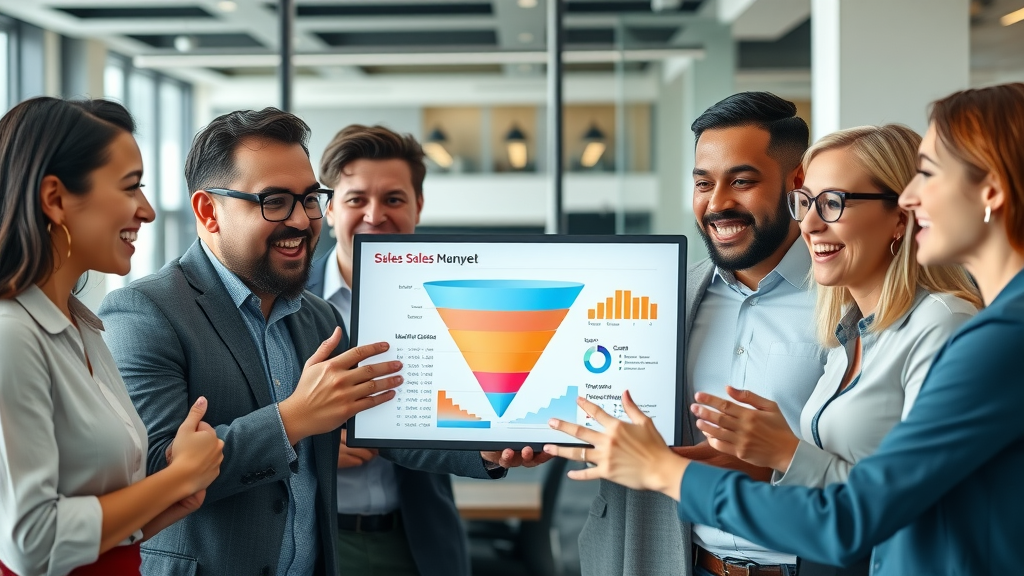
What Will You Learn About Sales Funnel Optimization?
- The fundamentals of the sales funnel and how each stage impacts your results
- Actionable sales funnel optimization tips
- Key metrics for funnel optimization
- Best practices for maximizing conversion rates and profits
This comprehensive guide will immerse you in practical sales funnel strategies designed to address every step of the customer journey. Whether you’re a marketing novice or a seasoned pro, you’ll find methodologies that blend proven fundamentals with advanced techniques for higher conversion rates . From uncovering the secrets behind irresistible lead magnets to streamlining your landing pages for mobile-first users, you’ll gain actionable tools to deliver measurable results. Prepare to move beyond theory and actively apply what you learn—each section is packed with tips that are simple to implement and easy to track.
Understanding the Sales Funnel: Stages, Functions, and Key Terms
| Sales Funnel Stages | Objective | Buyer Action Steps |
|---|---|---|
| Awareness | Attract potential customers | Visit landing pages, engage with lead magnets |
| Interest | Build engagement | Sign up for email marketing, download resources |
| Consideration | Nurture leads | Review landing page, compare offers |
| Decision | Prompt purchase | Complete checkout, schedule call |
| Action/Retention | Increase loyalty | Upsell, customer journey mapping |
Every successful sales funnel consists of a series of deliberate stages, each with its own set of objectives and corresponding buyer actions. At the awareness stage , your aim is to attract as many potential customers as possible through valuable content, clever SEO, and compelling lead magnets. As buyers move to the interest and consideration stages, it’s time to deepen engagement using personalized messaging and persuasive landing pages. The decision and action/retention phases focus on simplifying the purchase process and building lasting loyalty through upsells, post-purchase follow-ups, and customer journey mapping.
Knowing how these stages function—and the key outcomes and metrics each aims to achieve—is at the heart of effective funnel optimization . By visualizing your marketing funnel as a living process rather than a static path, your team can identify weak spots, seize growth opportunities, and optimize the customer journey at every touchpoint.
Marketing Funnel vs. Conversion Funnel: What’s the Difference?
- Definitions and key distinctions
- Aligning marketing funnel with sales funnel strategies
It’s essential to distinguish between a marketing funnel and a conversion funnel —terms that are often used interchangeably, but represent distinct funnels in growth strategy. The marketing funnel encompasses the broader set of activities that generate brand awareness and drive traffic, such as content marketing, paid advertising, and social media. In contrast, the conversion funnel zeroes in on converting those engaged leads into paying customers, optimizing every on-page and email interaction to improve your conversion rates.
To craft the highest-performing sales funnels , you must align your top-of-the-funnel marketing strategies with bottom-of-the-funnel conversion tactics. For instance, a strong blog post might attract a potential customer, but a finely tuned landing page is what seals the deal. Recognizing where your target audience is within these overlapping funnels allows you to tailor messages, offers, and experiences that maximize results across both.
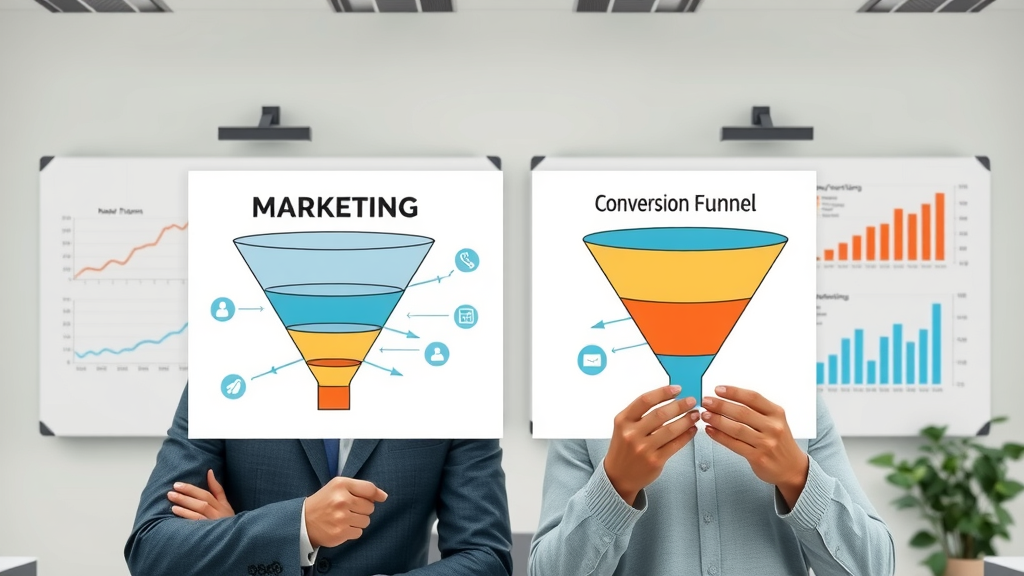
Mapping the Customer Journey Within Your Sales Funnel
- Touchpoints from potential customer to loyal client
- Aligning funnel stages with buyer psychology
An optimized sales funnel is rooted in a deep understanding of your customer journey . Mapping out every touchpoint—from the first ad impression to post-purchase engagement—not only reveals where gaps exist but also helps you design experiences that guide each potential customer toward loyalty. Consider the sequence: an eye-catching blog post sparks interest at the awareness stage, a valuable lead magnet moves the user into interest, followed by nurturing emails and persuasive social proof as they inch closer to becoming a paying customer.
By syncing each funnel stage with the psychology of your buyers, you align your offers with their real-time needs, pain points, and motivations. The result is a conversion funnel that feels natural and intuitive from the prospect’s perspective, making each step toward purchase frictionless and compelling.
People Also Ask: What is sales funnel optimisation?
"Sales funnel optimisation is the systematic improvement of each stage of the funnel to boost conversion rates, generate qualified leads, and maximize customer lifetime value."
Sales funnel optimization refers to the process of refining every step of the funnel with two main goals in mind: increasing the percentage of leads that become customers (conversion rates) and maximizing customer value across the entire journey. This involves analyzing data at every funnel stage, launching split tests on landing pages and emails, developing highly relevant lead magnets, and using social proof to eliminate buyer hesitation. A well-optimized sales funnel is built on constant iteration—each tweak is measured for its effect on conversion rates and adjusted to capture even more potential customers.
The 5 Stages of the Sales Funnel Explained
- Awareness Stage
- Interest Stage
- Consideration Stage
- Decision Stage
- Action/Retention Stage
The classic sales funnel is a journey through five distinct stages, each one crucial for ushering prospective customers from initial discovery to long-term advocacy. The awareness stage is about casting a wide net—attracting as many eyes as possible—while the interest and consideration stages deepen engagement and nurture curiosity. As prospects move to the decision stage , your goal becomes removing friction and providing the clarity that transforms them into paying customers. Finally, the action/retention stage leverages upsells, personalized email marketing, and customer journey mapping to maximize lifetime value and create loyal advocates for your brand.
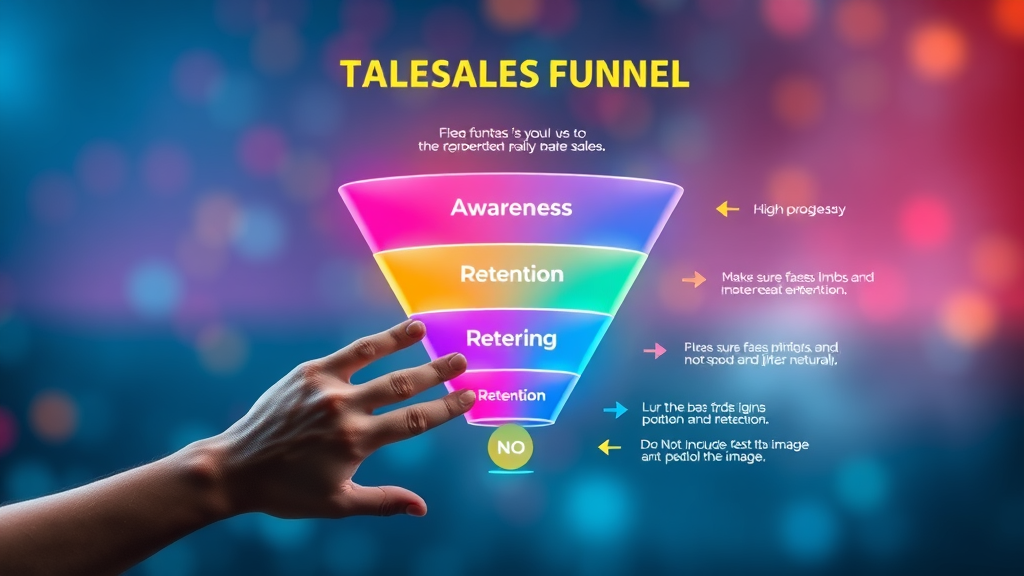
Funnel Stage Breakdown: Key Actions and Benchmarks
| Funnel Stage | Main KPI | Optimization Tip |
|---|---|---|
| Awareness | Website traffic | Optimize landing pages, use lead magnets |
| Interest | Engagement rate | Social proof, retargeting ads |
| Consideration | Content downloads | Personalize communication, targeted email marketing |
| Decision | Conversions | Simplify checkout, add testimonials |
| Action/Retention | Customer retention | Upsell, nurture sequence |
Every phase of the funnel can be measured by key performance indicators (KPIs). At the awareness and interest stages, look at site traffic and engagement rates to assess the effectiveness of your blog posts, lead magnets, and ads. As your prospects enter consideration and decision stages, measure how many contact information forms are completed, or how often cart checkouts are abandoned. Action/retention stages call for close monitoring of repeat purchases and upsell rates. By benchmarking these funnel stages, you’ll know exactly where to focus your optimization efforts for maximum impact.
People Also Ask: What are the 5 stages of the sales funnel?
"The five stages of the sales funnel are Awareness, Interest, Consideration, Decision, and Action/Retention – each serving a unique purpose in guiding potential customers towards purchase."
The five-stage model provides structure and clarity for any team looking to turn raw leads into long-term, loyal customers. At the awareness stage , your challenge is to introduce your brand to those who may not even know they need your product or service. Expertly crafted lead magnets and captivating landing pages keep interested users moving through the funnel, where further segmentation and email marketing nurture each relationship at the consideration and decision phases. Finally, a seamless post-sale experience in the action/retention stage cements trust and transforms one-time buyers into brand advocates.
Core Principles of Sales Funnel Optimization
- Data-driven decision-making
- Continuous A/B testing and funnel optimization
- Personalizing the marketing funnel to target audience behaviors
Sales funnel optimization is governed by three core principles: relentless data analysis, ongoing experimentation, and hyper-personalization. The best-performing funnels are never accidental; they are intentionally improved through analytics platforms that measure every click, sign-up, and bounce. A/B testing landing pages, lead magnets, and subject lines reveals what resonates most with your target audience . Even small tweaks—like changing a call-to-action or headline—can dramatically improve your conversion rate.
Personalization is the secret weapon in funnel optimization . Dynamic content, segmented email lists, and targeted offers ensure that every prospect feels recognized and valued. As you customize your sales funnel around these principles, you create a seamless journey that echoes your audience’s needs and buying signals at every stage of the funnel.

Conversion Rate Optimization: Turning Potential Customers Into Buyers
- Key conversion rate benchmarks by industry
- Steps to optimize conversion rates at each funnel stage
- Using landing pages and social proof effectively
Conversion rate optimization (CRO) is the practice of improving each funnel stage to guide potential customers through decision points and toward purchase. Benchmarks will vary by industry, but top-performing landing pages often see conversion rates of 5-10% or higher, while average sites linger below 2%. To boost these numbers, ensure your landing pages are laser-focused: feature a single, compelling offer, use concise headlines, and add strong social proof like testimonials or trust badges.
Testing different versions of calls-to-action, form fields, and lead magnets uncovers what motivates your target audience to take the next step—from entering their contact information in exchange for a free trial or guide, to clicking “Buy Now.” By tracking conversion funnels closely and optimizing at each touchpoint, companies experience a significant lift not only in leads, but in revenue from every prospective customer.
Lead Magnets and Landing Pages: Essential Tools for Funnel Optimization
- Characteristics of a high-converting landing page
- Types of lead magnets that maximize lead capture
The most effective sales funnels rely on irresistible lead magnets and high-converting landing pages. A lead magnet could be a downloadable guide, free trial, webinar registration, or exclusive discount, all offered in exchange for a prospect’s contact information. For maximum impact, every landing page should have a singular focus, minimal distractions, and a prominent value proposition that addresses the visitor’s needs.
Best practices include placing CTAs above the fold, highlighting social proof directly on the page, and ensuring your wireframe is mobile-responsive. Experiment with various offers and formats of lead magnets across different segments of your target audience . The more relevant and timely your offers, the more qualified leads you’ll funnel into your consideration and decision stages.
People Also Ask: What is a sales funnel strategy?
"A sales funnel strategy is the structured approach your business takes to attract, nurture, and convert potential customers through targeted tactics at every stage of the funnel."
A sound sales funnel strategy ensures you are intentional at every touchpoint. This approach blends organic traffic generation with persuasive email marketing follow-ups and retargeting campaigns. It starts by segmenting your target audience , then matching offers to specific buyer personas as they progress through the conversion funnel . Ultimately, your strategy should aim to deliver the right message at the right time, whether inviting a prospective customer to download a free guide at the top of the funnel, or sending a last-chance offer to a cart abandoner at the decision stage.
Optimizing Each Stage of the Conversion Funnel for Results
- Awareness: Content marketing, SEO, and traffic generation tactics
- Interest: Engaging email marketing and retargeting campaigns
- Consideration: Crafting persuasive messaging and social proof
- Decision: Streamlining landing page and checkout experiences
- Action/Retention: Loyalty programs and customer journey mapping
Successful funnel optimization means tailoring your marketing strategies to fit the unique goals and challenges of each stage. Build brand awareness using content marketing and SEO, then move to more personalized engagement via email marketing and remarketing. During the consideration phase, leverage persuasive messaging, user reviews, and social proof . Streamline landing pages and checkout processes to ease the decision-making journey. Finally, lock in customer loyalty with post-purchase support and retention programs—key for maximizing lifetime value at the bottom of the funnel.
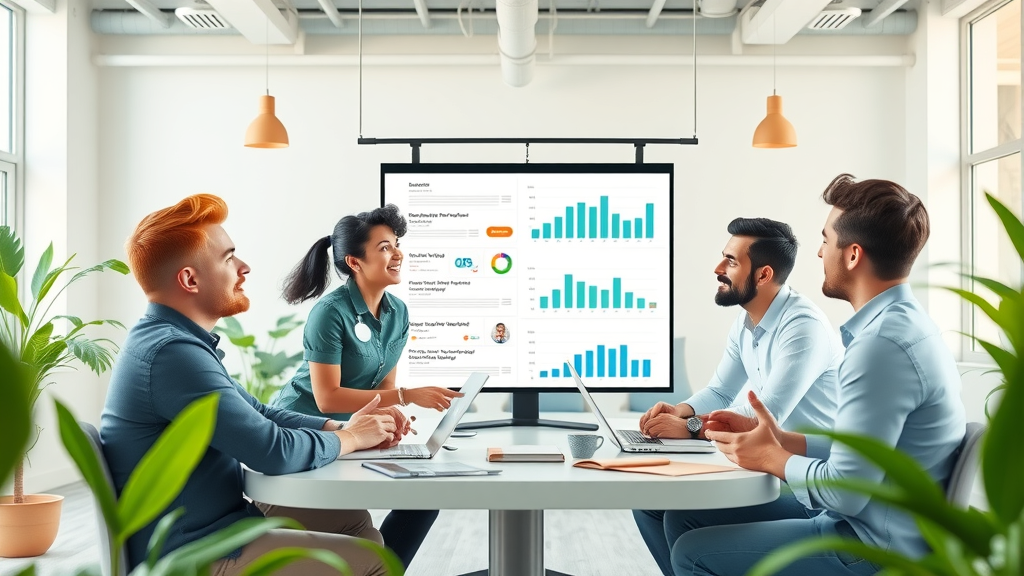
Testing and Measuring Conversion Rates at Each Funnel Stage
| Stage | Key Metric | Tool/Method |
|---|---|---|
| Awareness | CTR | Google Analytics, Hotjar |
| Interest | Engagement rate | CRM dashboards, email analytics |
| Consideration | Lead magnet downloads | Landing page builders |
| Decision | Conversion rate | Checkout A/B testing |
| Retention | Upsell/renewal rate | Post-purchase follow-up |
For reliable improvements in conversion rates , it’s vital to measure the right metrics at every stage. Use Google Analytics or Hotjar to monitor awareness through clicks and impressions, then track email opens and engagement rates at the interest phase. In the consideration and decision stages, count downloads of your lead magnets, form completions, and cart conversions. Once a customer has converted, watch upsell offers and renewal rates to gauge the retention stage’s health. Armed with these insights, you can make data-driven decisions to fortify each segment of your conversion funnel .
People Also Ask: How do you optimize the conversion funnel?
"Optimizing the conversion funnel requires analyzing data at every funnel stage, implementing split tests, and strengthening each touchpoint – from lead magnets to landing pages – to capture more potential customers."
The key to optimizing the conversion funnel lies in continual testing, tracking, and refinement. Start by reviewing analytics to identify drop-off points, then experiment with A/B tests on critical assets like lead magnets, landing pages, and email outreach. Remove friction wherever possible: reduce form fields, speed up load times, and make calls-to-action compelling. Layer in new offers and social proof at stages where prospects stall. The process never ends, but each improvement compounds the previous, steadily improving your conversion rate and funnel performance over time.
Key Techniques and Best Practices for Advanced Funnel Optimization
- Advanced segmentation of the target audience
- Automation in email marketing for lead nurturing
- Leveraging social proof and testimonials on landing pages
- Funnel stage-specific content and offers
- Optimizing conversion rate through continuous improvement
Elevate your funnel optimization with advanced tactics, starting with deep audience segmentation. Use behavior-based triggers and interests collected through your landing pages and blog posts to deliver personalized messages. Automated email sequences nurture leads with timing and content based on their engagement and funnel stage, increasing the odds of transforming a prospective customer into a loyal brand ambassador.
Place social proof , such as testimonials, client logos, and reviews, strategically on all high-traffic landing pages to eliminate doubt and reinforce purchasers’ decisions. The highest-performing businesses also create unique content and offers tailored to each funnel stage : guides and infographics at the top, detailed free trial prompts and testimonials at the bottom. Continuous improvement, coupled with data-driven decisions, ensures your conversion funnel remains an asset for achieving—and surpassing—revenue goals.

Overcoming Common Sales Funnel Optimization Challenges
- Diagnosing drops in conversion rates across stages
- Adapting strategies for diverse audience segments
- Handling landing page fatigue and offer blindness
Even the most experienced marketers face challenges in sales funnel optimization . An unexpected drop in conversion rates at a specific stage might reveal deeper issues—like confusing copy, offer fatigue, or technical glitches on your landing pages. Use analytics tools to pinpoint problem areas, then conduct qualitative research (like surveys or interviews) to understand why prospective customers aren’t converting.
As your audience becomes more diverse, it’s important to adapt offers for different segments. For example, a blog post or lead magnet that resonates with decision-makers might need a different angle to hook end-users. Keep your funnel fresh by rotating offers, updating design elements, and introducing interactive content, ensuring that frequent visitors aren’t immune to your calls-to-action or landing pages.
Visual Guide: Example of a High-Performing Sales Funnel
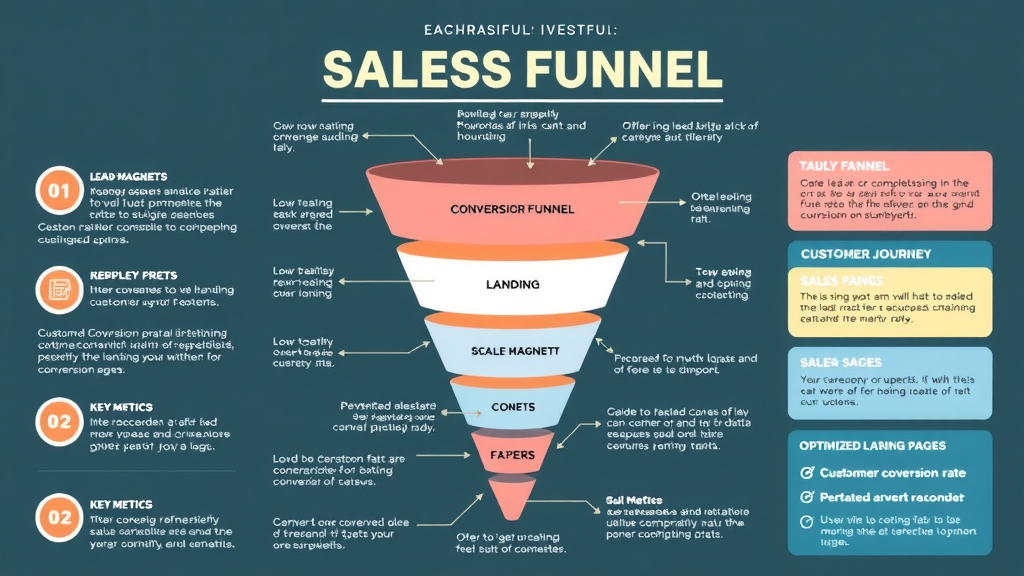
This visual guide illustrates a high-performing sales funnel in action. From attracting visitors with engaging lead magnets and dynamic blog posts to nurturing high-quality leads through targeted landing pages and strategic retargeting, each step is clearly mapped and optimized. Key data points and touchpoints—like campaign CTR, download rates, and upsell conversion rate—provide actionable benchmarks to measure your own funnel’s effectiveness and identify areas for improvement.
Powerful List of 20 Expert Tips for Sales Funnel Optimization
- Audit every funnel stage for leaks
- Define your target audience clearly
- Use persuasive lead magnets
- Test multiple landing pages
- Optimize for mobile-first visitors
- Personalize email marketing
- Apply A/B testing throughout the funnel
- Incorporate compelling CTAs
- Utilize social proof on every landing page
- Map the customer journey visually
- Automate retargeting campaigns
- Streamline funnel navigation
- Track conversion rates diligently
- Segment leads for follow-up
- Remove friction in the decision stage
- Leverage video on key pages
- Experiment with different offers
- Use clear value propositions
- Follow up post-purchase
- Monitor and adapt using analytics
These tried-and-true tips form the foundation of expert funnel optimization . By conducting regular audits, you’ll quickly identify where prospects drop off or what messaging fails to resonate. Deep audience definition allows you to present more relevant offers, while A/B testing and analytics reveal the most effective landing page layouts and lead magnet formats. Never discount consistent post-purchase engagement—from surveys to loyalty rewards—to retain paying customers and maximize long-term profitability.
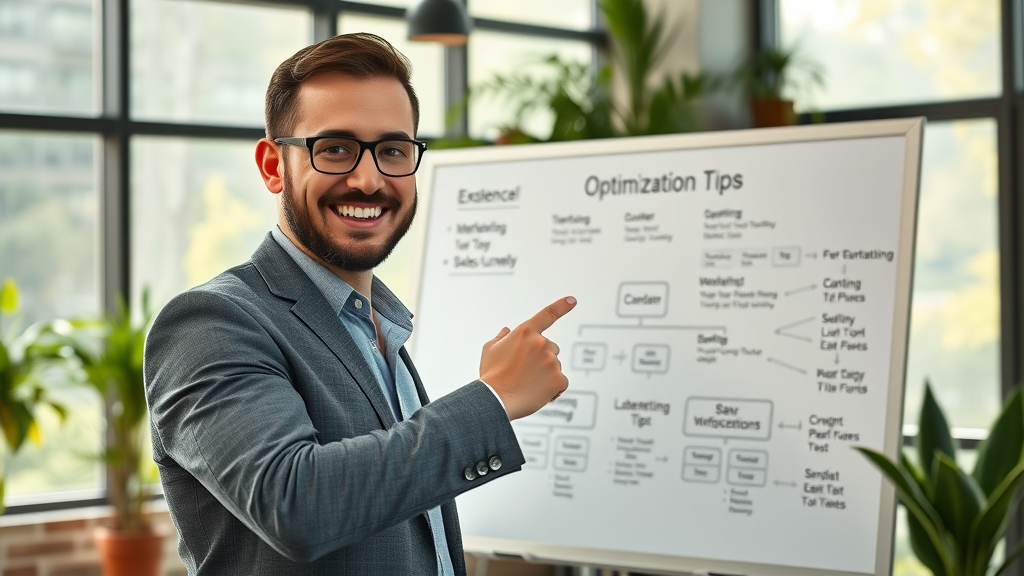
Frequently Asked Questions on Sales Funnel Optimization
- How do I know if my sales funnel needs optimization? If you notice low conversion rates at any point in your funnel or high drop-off between stages, it’s time to audit and optimize. Tools like heat maps, analytics dashboards, and customer feedback illuminate where improvements are needed most.
- What are the best tools for funnel optimization testing? Industry favorites include Google Analytics, Hotjar, Optimizely, Unbounce, and HubSpot. Each can track funnel performance and facilitate A/B tests on landing pages, emails, and CTAs for increased conversion rates.
- How often should I review landing page performance? At minimum, audit landing page data monthly, but consider more frequent reviews during campaigns or following design changes. Continual monitoring ensures rapid response to performance dips.
- Can sales funnel optimization be automated? Yes! Automation can handle lead scoring, email sequences, and retargeting, freeing up your team for creative and strategic work. Just be sure to monitor data and adapt as audience preferences evolve.
- What is the most important conversion funnel metric to track? While every funnel stage has key benchmarks, overall conversion rate is a primary indicator of success. It’s wise to also track cost-per-acquisition, lead magnet downloads, and customer retention rates for a holistic view.

Key Takeaways for Maximizing Profits Through Sales Funnel Optimization
- Sales funnel optimization is essential for boosting conversion rates and revenue
- Effective funnels address the distinct needs of potential customers at every stage
- Continuous improvement based on analytics yields the greatest results
Take action by implementing regular audits, personalizing offers, and testing every step to create a sales funnel that consistently maximizes profits.
Gain an Edge: Schedule a Free Strategy Session Today
- Get tailored advice for your sales funnel optimization
- Boost your marketing funnel performance
- Click here to book your free consultation

To further enhance your understanding of sales funnel optimization, consider exploring the following resources:
- “Sales Funnel Optimization: 10 Strategies for More Conversions” ( mountain.com )
This article provides actionable strategies to improve each stage of your sales funnel, including tips on creating high-quality content, optimizing landing pages, and utilizing social proof to boost conversions.
- “Sales Funnel Optimization: 9 Ways to Maximize Conversions” ( semrush.com )
This resource offers nine practical tactics to enhance your sales funnel, such as identifying and segmenting your target audience, using compelling calls to action, and leveraging social proof to influence purchasing decisions.
By delving into these resources, you’ll gain deeper insights and practical tips to refine your sales funnel and drive greater profitability.
 Add Row
Add Row  Add
Add 




Write A Comment